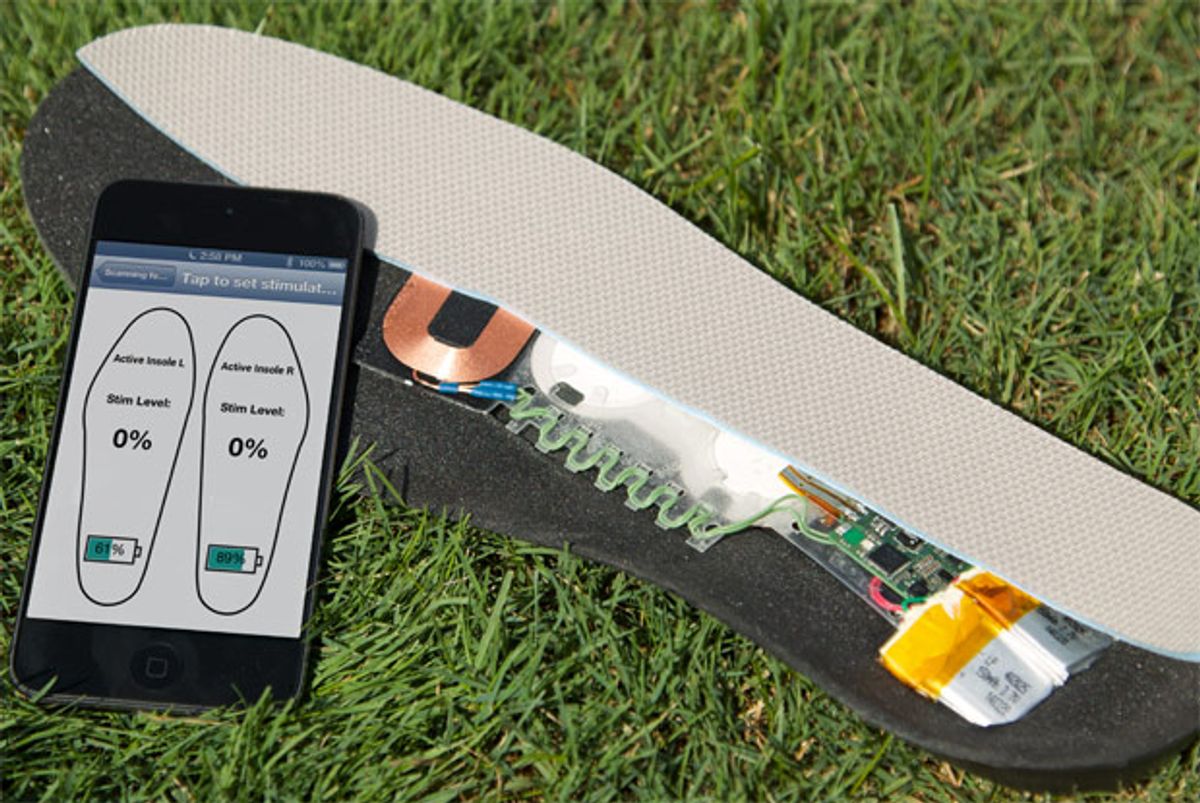Some good vibrations in the shoes of elderly people could prevent potentially fatal falls in old age. In a new study, researchers show that imperceptible vibrations in shoe soles can improve balance for seniors—a technological breakthrough that could offset the usual decline in the human sense of touch and instinctive balance.
The idea of using vibratory stimulation to improve human balance is not new. IEEE Spectrum ran a feature in 2005 explaining how it works. (One of the engineers involved in the new study, James Niemi, was a coauthor on the Spectrum article and director of engineering at a startup that tried to commercialized the technology a decade ago.) Research shows that both old age and certain diseases such as diabetes can lead to a decline in the sense of touch. Without that sensory input the body’s balance control system malfunctions. Vibrations can restore some function to the sense of touch by creating artificial “noise” that pushes nerve signals to a level above the sensory threshold required for them to communicate effectively with the brain and rest of the body. (This illustration explains the concept, called stochastic resonance [pdf].)
"Although loss of sensation in the feet is a common problem among elderly people that can impair balance and gait and result in falls, there are currently no interventions available that can reverse sensory impairments and prevent these dangerous consequences," said Lewis Lipsitz, M.D. and director of the Institute for Aging Research at Hebrew SeniorLife in Boston, in a press release. "We were very excited to discover that small amounts of vibratory noise applied to the soles of the feet may be able to do just that."
Past research had already shown that such vibrations applied to the feet can boost the sense of balance in healthy people both young and old, and for patients with conditions such as diabetic neuropathy and stroke. But the latest study published in the journal Archives of Physical Medicine and Rehabilitationimproved on the devices delivering the vibrations by making them into a practical and portable package.
Researchers at the Wyss Institute for Biologically Inspired Engineering at Harvard University redesigned the original devices by turning to piezoelectric actuators capable of converting electrical energy into mechanical signals such as pressure or vibrations. The team put the actuators into the shoe insoles and connected them to a tiny circuit and rechargeable battery located in the tongue of the shoe.
The latest study used 12 healthy, elderly volunteers over the age of 65 to test the effectiveness of the piezoelectric actuators placed in commonly-available shoe insoles. Results showed that the vibrating insoles reduced postural sway and improved the steadiness of walking. It also led to better timed performances on a “Get Up and Go” test that involved participants standing up, walking three meters, turning around and returning to sit down at their original spot.
New types of shoes could also help elderly people in other ways. In 2011, the U.S. Federal Communications Commission certified a pair of GPS-enabled shoes for tracking elderly people suffering from Alzheimer’s disease or dementia.
Jeremy Hsu has been working as a science and technology journalist in New York City since 2008. He has written on subjects as diverse as supercomputing and wearable electronics for IEEE Spectrum. When he’s not trying to wrap his head around the latest quantum computing news for Spectrum, he also contributes to a variety of publications such as Scientific American, Discover, Popular Science, and others. He is a graduate of New York University’s Science, Health & Environmental Reporting Program.



